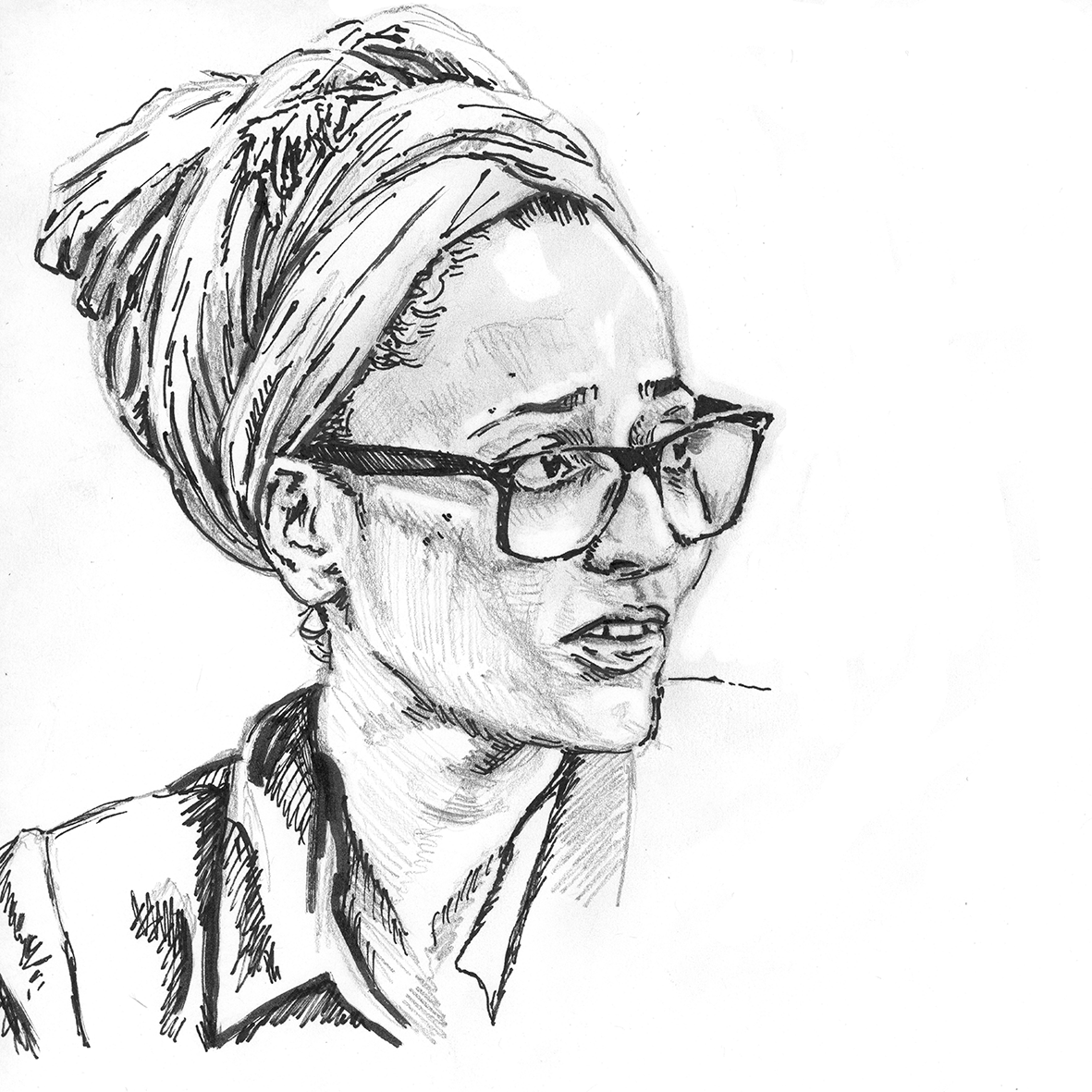In the sweltering auditorium of the DuSable Museum of African American History, at the border of Washington Park and Hyde Park, the packed audience murmured on Wednesday, November 30, in anticipation of the presence of acclaimed author Zadie Smith. Clasped like precious heirlooms in audience members’ arms, the bright yellow covers of her new book Swing Time dotted the room with frequency. As one fan whispered to a woman next to him, “I told my kids, this is like a rock concert to me.”
Smith has attained a degree of fame rarely found among novelists. Perhaps she’s not quite a household name among non-readers, but she is certainly a book lover’s version of Kate Winslet or the like—poised, elegant, well dressed, her youth the object of envy and awe. The publication of her first novel White Teeth (which she wrote while she was an undergraduate at the University of Cambridge) catapulted her into literary stardom and cemented her as a writer of deep intelligence and empathy. Words like “wunderkind” and “prodigy” swirled around her as that novel led to the first usage and development of the literary term “hysterical realism.” Since then, Smith has published four other novels—The Autograph Man, On Beauty, NW, and now Swing Time—and a book of essays, Changing My Mind, as well as many pieces for the New Yorker.
Long-lasting applause that she dismissed with a wave of her hand greeted Smith when she took the stage at the DuSable Museum. She read an excerpt from Swing Time before sitting down to a Q&A session with author and University of Chicago creative writing instructor Vu Tran. The excerpt described the narrator’s early childhood encounters with Tracy, a highly talented dancer in her tap class, and also described the narrator’s Jamaican mother and white father. She describes the affinity Tracy, whose father is in prison, has for the narrator’s father instead. Throughout the novel, Tracy remains a fixture in the narrator’s mind as we follow her development through the lens of her changing relationship with the narrator. The ensuing conversation, which had a lively, easeful rhythm, affirmed what we already know about Smith: she is a supremely gifted and thoughtful author, the type that exudes a literary sensibility. She is also wise and at times a bit wry. While I would not go so far as to call her warm, she is obviously kind.
“If you have a two-year-old, you’re operating a sort of fascist theocracy,” she quipped, reflecting on the influence of childhood that lingers in Swing Time and on how her perspective shifted once she became a mother. Those childhood years, she mused, only constituted a mere fraction of her entire life and yet they persist with the vividness of Technicolor. Swing Time literally swings time (an observation Tran made, which elicited laughter from the audience and a shrug from Smith) as it floats through the memories of the narrator and her childhood friend’s diverging adulthoods. Smith also said she wanted to depict female friendships in a complex light that is rarely present in literature and media—relationships based in part on the friendships in her own life.
Tran asked Smith about the narrator’s desire to be submissive to those she views as greater than her. Smith said that while the concept of freedom as a value comes from the economic market, people tend to harbor a “desire to be unfree” as a way of giving shape to their lives. It was an observation that spurred an abundance of head nodding throughout the crowd.
The conversation then transitioned into an audience-driven Q&A. When an audience member said she would “ask the Trump Question,” Smith groaned good-humoredly. She compared Trump’s temperament to that of her six-year-old daughter—prone to deflecting blame, acting completely inculpable, and being allergic to facts. Smith was then asked whether it was possible to depict characters with different life experiences honorably. She said if she were to think too deeply about the political implications of the characters she represents, she would not be able to write a word—and that furthermore, it is impossible to “represent” fictional people anyway because, as she said, “Fiction…is not a survey.”
The line for the post-Q&A book-signing ran from far back in the auditorium and weaved well into the separate room where Smith sat. “She has such a sharp mind,” marveled one reader in the line. “She can look at a topic from a million different angles.”
It was true: no matter what the question, Smith approached each in a way that might have occasionally been dissident but was also always respectful and eye-opening. She advocates for a world of clarity and empathy, one where cultural differences are a marker of cohesive society and are to be treasured. But at the same time, she is not starry-eyed. While remaining well aware of the world as it is, she has an image of her ideal world and writes fiction to reflect that tension accordingly. When she spoke on the stage of the DuSable auditorium that Wednesday, as one imagines is the case every time she speaks, the audience gleaned the sense that a somewhat methodical mulling is constantly taking place in her expansive mind—and a sense of the wealth of knowledge stored beneath her cool, collected surface.


